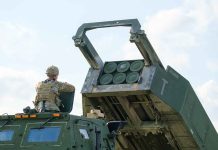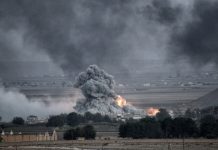
Who would have thought the Kremlin would go full runway model to promote bomb shelters?
At a Glance
- The Kremlin utilizes glamorous models in a video campaign to promote bomb shelters.
- Massive refurbishing efforts are underway for old Soviet-era shelters due to the conflict in Ukraine.
- Millions of rubles are being spent on upgrades, with local authorities directing significant resources.
- Experts are skeptical about the tactical necessity but suggest possible ulterior motives in funding.
Kremlin’s Fashion Statement? Models Promote Bomb Shelters
The Kremlin has taken an unexpected turn in its approach to publicizing bomb shelters by enlisting glamorous models for a flashy promotional video. This campaign, featuring these models parading beautifully into bomb shelters, attempts to buffer the inherent fears connected to preparing for a crisis by wrapping it in a veil of high fashion. It’s a curious mix, blending the grave necessity of emergency readiness with a sprinkle of chic sophistication, aiming to make the concept of taking shelter seem not only prudent but posh.
Russia tries to glamorise newly built bomb shelters as the Kremlin releases bizarre video of flashy models walking into evacuation shelter https://t.co/NXFc2Wl77x pic.twitter.com/s0rCX1O60J
— Mail+ (@DailyMailUK) August 28, 2024
The overhaul isn’t just for show. The Kremlin has ordered systematic inspections and repairs of bomb shelters that have been dormant for decades. Emerging from years of neglect, these shelters are being rapidly refurbished as part of a larger militarization strategy influenced by the ongoing war in Ukraine. This rejuvenation project involves multiple ministries, including those of Emergency Situations, Defense, and civilian oversight bodies.
Government’s Large-Scale Refurbishing Efforts
The decision to inspect and upgrade the shelters was initiated by the government earlier this year, orchestrated by a host of agencies to revive the Soviet-era infrastructure. “An order was given from Moscow to carry out these works everywhere — inspection and repair,” remarked one anonymous official familiar with government meetings on the subject.
Local authorities are pumping vast sums into these projects. Krasnodar, Nizhny Novgorod, Ryazan, and other regions have allocated significant resources to this purpose. Interestingly, some cities, including Kazan, are considering metro systems as alternative shelters because the current ones are in bad shape. Signs pointing locals to bomb shelters have started appearing, unsettling many.
Deeper Implications and Skepticism
The extreme measures taken in upgrading these bomb shelters could imply Russia is expecting potential bombings or bolstering a narrative of being under attack. Amidst this backdrop, some experts argue that the upgrades might not hold actual tactical value since Ukraine lacks the capacity to strike deep into Russian territory.
“A decision to inspect the network of bomb shelters was made by the government in the spring,” one official was quoted, driving home the gravity with which the Kremlin is treating this initiative. Another quotable thought comes from Mark N. Katz, a professor at George Mason University: “The main point of the upgrade may be to obtain Russian government money for the probably well-connected contractors who win the bids to undertake the bomb shelter upgrades.”
Conclusions on Russia’s Maneuverings
As the refurbishments began after Russia’s invasion of Ukraine, it highlights an underlying preparation for either defense or further offensive actions. Many districts have redirected millions of rubles for these updates, with local authorities downplaying the significance of these renovations by utilizing euphemisms like “deep lodgings.”
This curious blending of fashion and function by the Kremlin is likely designed to craft a dual narrative of readiness and reassurance amidst uncertainty. What’s clear is that the Kremlin wants its people ready, and perhaps sees no limit to what it might take to get there — even if it means a little glamor along the way.
“This is another obvious sign that Putin’s Kremlin has no intention of ending the war,” declared Vadim Skibitskyi, a representative for the intelligence directorate, shedding light on Russia’s sustained focus on militarization.






















